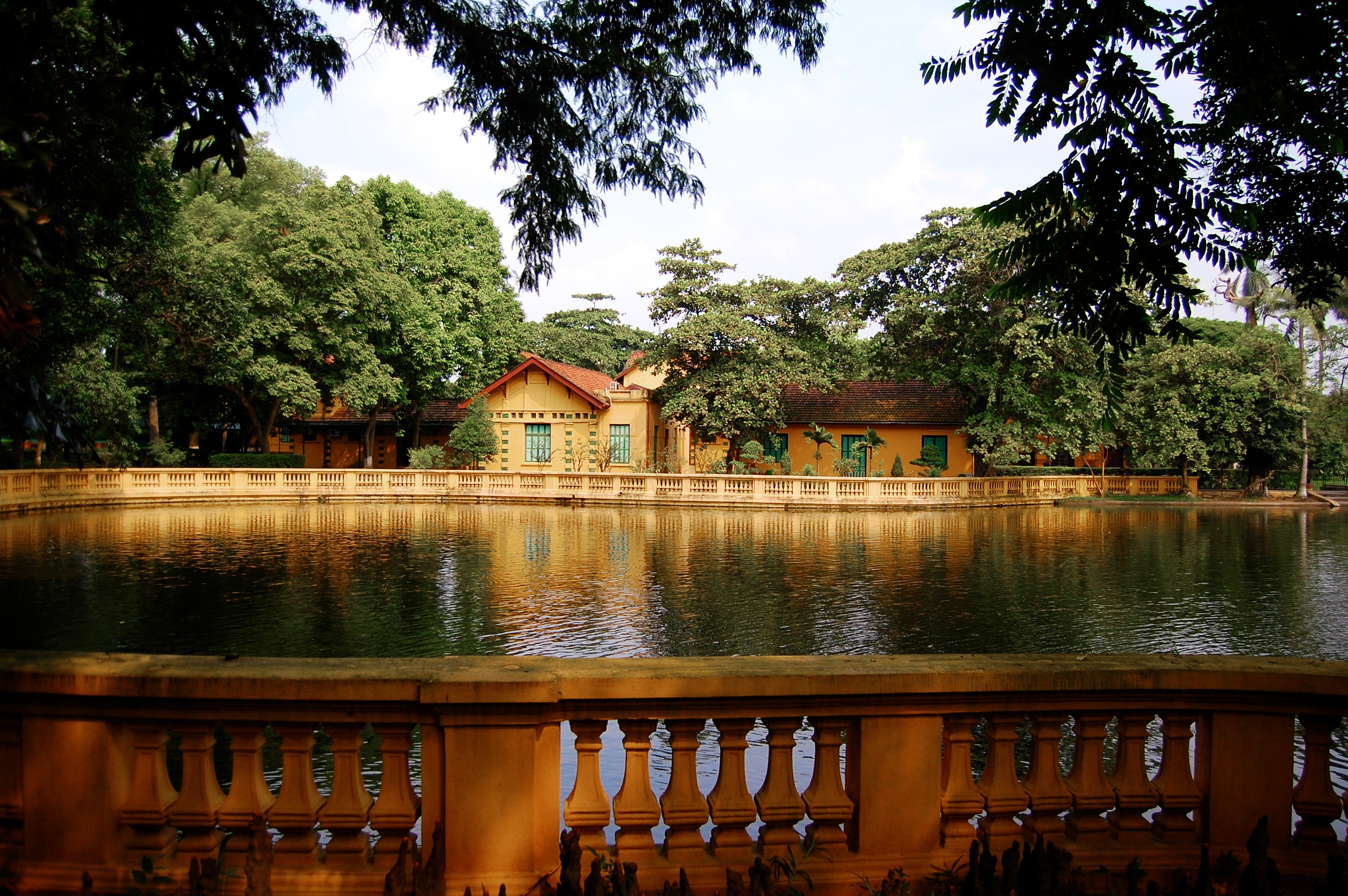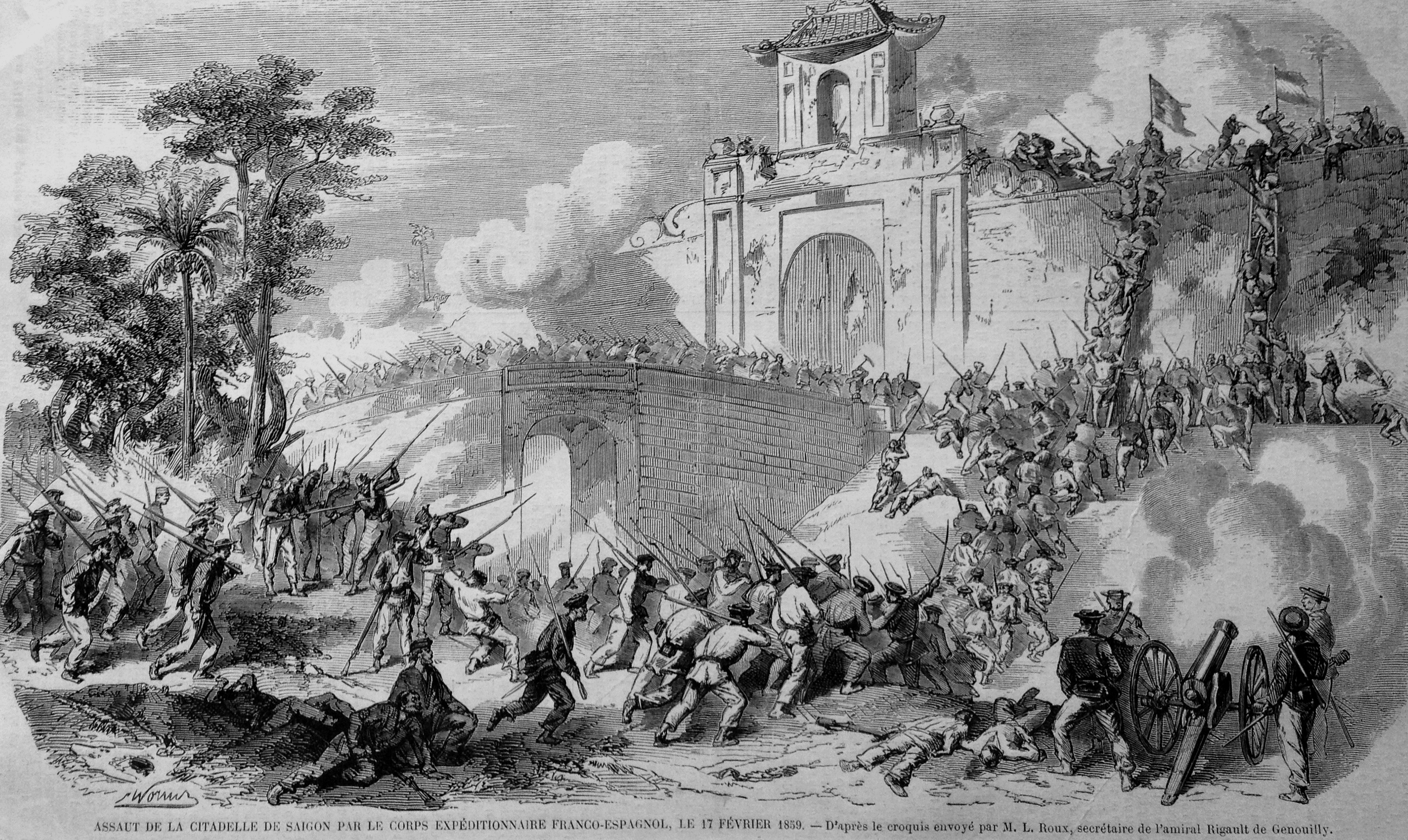|
Lê Chất
Lê Chất ( vi-hantu, 黎質, ?–1826), also known as Lê Văn Chất (黎文質), Lê Tông Chất (黎宗質) or Lê Công Chất (黎公質), was a general of Tây Sơn dynasty. Later he became a general of Nguyễn dynasty. Early life Lê Chất was born in Phù Mỹ District, Bình Định Province. He was a son-in-law of Lê Trung. He served as ''Đại Đô đốc'' (大都督, "Grand Chief Controller") in Tây Sơn dynasty. After the death of Emperor Quang Trung, Chất prophesied that the Tây Sơn dynasty would soon decline and tried to persuade Lê Trung to surrender to Nguyễn lord several times. But Trung hesitated. In 1798, Lê Trung was purged by Emperor Cảnh Thịnh. He had to surrender to the Nguyễn lord. He was appointed ''hậu quân tướng quân'' ("general of the rear army") by Gia Long. Career Chất played an important role in the pacification of the Tây Sơn dynasty. He was ordered to build Imperial City of Huế together with Phạm ... [...More Info...] [...Related Items...] OR: [Wikipedia] [Google] [Baidu] |
Tomb Of Lê Văn Duyệt
Tomb of Lê Văn Duyệt ( vi, Lăng Tả quân Lê Văn Duyệt), also known as Tomb of the Marshal in Ba Chieu () is a Vietnamese tomb located in Bình Thạnh District, Ho Chi Minh City, Vietnam. The tomb was originally built for Marshal Lê Văn Duyệt and his wife but later became some other Nguyễn dynasty's mandarins worship house. History Lê Văn Duyệt (1763–1831) was a Vietnamese general who helped Nguyễn Ánh put down the Tây Sơn rebellion and unify Vietnam. Born into a family of peasants nearby Tiền Giang, Duyet joined prince Nguyễn Ánh's side in fighting the Tây Sơn rebellion. Because of Duyet's military ability, he quickly rose through the rank of Nguyễn army and became a marshal when the Tây Sơn-Nguyễn war ended. After the foundation of Nguyễn Dynasty, Duyet served as a high-ranking mandarin and, later, viceroy of southern part of Vietnam. His governance greatly stabilized and developed the south of Vietnam, turning it into a wea ... [...More Info...] [...Related Items...] OR: [Wikipedia] [Google] [Baidu] |
Presidential Palace, Hanoi
The Presidential Palace of Vietnam (), located in the city of Hanoi, currently is the official residence of the President of Vietnam. Before 1954, it was named the Palace of Governors-general of Indochina (, ). History It was built between 1900 and 1906 to house the French Governor-General of Indochina, constructed by Auguste Henri Vildieu, the official French architect for French Indochina. Like most French Colonial architecture, the palace is pointedly European. The only visual cues that it is located in Vietnam at all are mango trees growing on the grounds. The yellow palace stands behind wrought iron gates flanked by sentry boxes. It incorporates elements of Italian Renaissance design, including: *aedicules *a formal piano nobile reached by a grand staircase *broken pediments *classical columns *quoins When Vietnam achieved independence in 1954, Ho Chi Minh was ... [...More Info...] [...Related Items...] OR: [Wikipedia] [Google] [Baidu] |
Quán Thánh Temple
Quán Thánh Temple ( Vietnamese: Đền Quán Thánh), also known as Trấn Vũ Temple (Hán Việt: Trấn Vũ Quán, Hán tự: 真武觀), is a Taoist temple in Hanoi, Vietnam. Dated to the 11th century, the temple was dedicated to Xuan Wu, or Trấn Vũ in Vietnamese, one of the principal deities in Taoism. As one of the Four Sacred Temples of the capital, Quan Thánh Temple is located near West Lake in a ward of the same name: Quán Thánh Ward; and is one of the leading tourist attractions in Hanoi. The temple's name means Place (alternatively shop/restaurant) of the Gods. The name of the long street running by the temple is also called 'Quán Thánh' street. History Legend has it that Quán Thánh Temple was established during the reign of Emperor Lý Thái Tổ (reigned 1010–1028) and was dedicated to Trấn Vũ, Deity of the North in Taoism, whose symbols of power are the serpent and turtle (see section on Animal Symbolism below). It is one of the Four Sacred Temples ... [...More Info...] [...Related Items...] OR: [Wikipedia] [Google] [Baidu] |
Phan Thanh Giản
Phan Thanh Giản ( vi-hantu, ; , November 11, 1796– August 4, 1867) was a Grand Counsellor at the Nguyễn court in Vietnam. He led an embassy to France in 1863, and committed suicide when France completed the invasion of Southern Vietnam (Cochinchina) in 1867. Phan Thanh Giản's grandfather was a Minh Hương (Ming dynasty refugees, with ancestry from Haicheng. Southern Fujian Province in China), while his grandmother was a Vietnamese woman. Life Treaty of Saigon Phan Thanh Giản was one of the foremost mandarins of the Nguyễn court. He played a key role in negotiating the Treaty of Saigon with the French in 1862. The negotiations led to the formal cession of Vietnamese territory that the French Expeditionary Corps had occupied in 1861 (the first parts of the future colony of Cochinchina): the provinces of Già Dinh, Mỹ Tho, Biên Hòa, and the Poulo Condore islands were ceded, and war reparations paid to the French. Because of his role in these negotiat ... [...More Info...] [...Related Items...] OR: [Wikipedia] [Google] [Baidu] |
Lê Văn Duyệt
Lê Văn Duyệt)., group=n (1763 or 1764 – 30 July 1832) was a Vietnamese general who helped Nguyễn Ánh—the future Emperor Gia Long—put down the Tây Sơn wars, unify Vietnam and establish the Nguyễn dynasty. After the Nguyễn came to power in 1802, Duyệt became a high-ranking mandarin, serving under the first two Nguyễn emperors Gia Long and Minh Mạng.Nghia M. Vo ''Saigon: A History'' – Page 46 2011 Born into a family of peasants near Tiền Giang, Duyệt joined Prince Nguyễn Ánh in fighting the Tây Sơn wars. Because of Duyệt's military ability, he quickly rose through the ranks of the Nguyễn army and became a marshal when the Tây Sơn-Nguyễn war ended. After the foundation of the Nguyễn dynasty, Duyệt served as a high-ranking mandarin and, later, viceroy of the southern part of Vietnam, ruling from Gia Định (modern-day Saigon). His governance greatly stabilized and helped develop the Nam Bo region, turning it into a wealthy and p ... [...More Info...] [...Related Items...] OR: [Wikipedia] [Google] [Baidu] |
Tự Đức
Tự Đức (, vi-hantu, 嗣 德, lit. "inheritance of virtues", 22 September 1829 – 19 July 1883) (personal name: Nguyễn Phúc Hồng Nhậm , also Nguyễn Phúc Thì) was the fourth emperor of the Nguyễn dynasty of Vietnam; he ruled from 1847 to 1883. Biography The son of Emperor Thiệu Trị, Prince Nguyễn Phúc Hồng Nhậm was born on 22 September 1829, and succeeded his father on the throne, with the reigning title of Tự Đức, but family troubles caused his era to have a violent start. Thiệu Trị had passed over his more moderate eldest son, Hồng Bảo, to give the throne to Tự Đức, known for his staunch Confucianism and opposition to foreigners and innovation. As a result, and due to the repressive policies of the previous Nguyễn dynasty emperor, there was now a great deal of dissatisfaction with Nguyễn rule and a legitimate royal figure to rally this opposition. Rule Cholera and dwindling In summer 1849, one year after Tu Duc's inaugurat ... [...More Info...] [...Related Items...] OR: [Wikipedia] [Google] [Baidu] |
Ho Chi Minh City
, population_density_km2 = 4,292 , population_density_metro_km2 = 697.2 , population_demonym = Saigonese , blank_name = GRP (Nominal) , blank_info = 2019 , blank1_name = – Total , blank1_info = US$61.7 billion , blank2_name = – Per capita , blank2_info = US$6,862 , blank3_name = GRP ( PPP) , blank3_info = 2019 , blank4_name = – Total , blank4_info = US$190.3 billion , blank5_name = – Per capita , blank5_info = US$21,163 , blank6_name = HDI (2020) , blank6_info = 0.795 ( 2nd) , area_code = 28 , area_code_type = Area codes , website = , timezone = ICT , utc_offset = +07:00 , postal_code_type = Postal code , postal_code = 700000–740000 , iso_code ... [...More Info...] [...Related Items...] OR: [Wikipedia] [Google] [Baidu] |
Minh Mạng
Minh Mạng () or Minh Mệnh (, vi-hantu, 明 命, lit. "the bright favour of Heaven"; 25 May 1791 – 20 January 1841; born Nguyễn Phúc Đảm, also known as Nguyễn Phúc Kiểu) was the second emperor of the Nguyễn dynasty of Vietnam, reigning from 14 February 1820 until his death, on 20 January 1841. He was the fourth son of Emperor Gia Long, whose eldest son, Nguyễn Phúc Cảnh, had died in 1801. He was well known for his opposition to French involvement in Vietnam and his rigid Confucian orthodoxy. Early years Born Nguyễn Phúc Đảm at Gia Định in the middle of the Second Tây Sơn – Nguyễn War, Minh Mạng was the fourth son of lord Nguyễn Phúc Ánh – future Emperor Gia Long. His mother was Gia Long's second wife Trần Thị Đang (historically known as Empress Thuận Thiên). At the age of three, under the effect of a written agreement made by Gia Long with his first wife Tống Thị Lan (Empress Thừa Thiên), he was taken in a ... [...More Info...] [...Related Items...] OR: [Wikipedia] [Google] [Baidu] |
Posthumous Name
A posthumous name is an honorary name given mostly to the notable dead in East Asian culture. It is predominantly practiced in East Asian countries such as China, Korea, Vietnam, Japan, and Thailand. Reflecting on the person's accomplishments or reputation, the title is assigned after death and essentially replaces their name used during life. Although most posthumous names are assigned to royalty, some posthumous names are given to honor significant people without hereditary titles, such as courtiers or military generals. A posthumous name should not be confused with era names (年號), regnal names (尊號), or temple names (廟號). Format One or more adjectives are inserted before the deceased's title to make their posthumous name. Posthumous names are exclusively owned on the state level, although not necessarily on a broader national level. The name of the state or domain of the owner is added to avoid ambiguity from multiple similar posthumous names. The Chinese lan ... [...More Info...] [...Related Items...] OR: [Wikipedia] [Google] [Baidu] |
Nguyễn Huỳnh Đức
Nguyễn Huỳnh Đức ( 阮黃德; 1748–1819) was a general and official of the Nguyễn dynasty of Vietnam. He served as a general of Nguyễn Ánh during the Nguyễn Lords' fight against the Tây Sơn rebellion. Nguyễn Ánh prevailed in 1802 and became Emperor Gia Long, establishing the Nguyễn dynasty The Nguyễn dynasty (chữ Nôm: 茹阮, vi, Nhà Nguyễn; chữ Hán: 阮朝, vi, Nguyễn triều) was the last Vietnamese dynasty, which ruled the unified Vietnamese state largely independently from 1802 to 1883. During its existence, .... Duc then served as the viceroy of southern Vietnam during Gia Long's reign. Early years He was born Huỳnh Tường Đức (黃祥德). He was awarded with the National family name Nguyễn for his deeds and valour. Since then, he has a double surname of Nguyễn Huỳnh. Nguyễn Huỳnh Đức was born and raised in Cái Én, Trường Khánh village, Định Viễn prefecture, Long Hồ camp (now Khánh Hậu ward, T ... [...More Info...] [...Related Items...] OR: [Wikipedia] [Google] [Baidu] |





